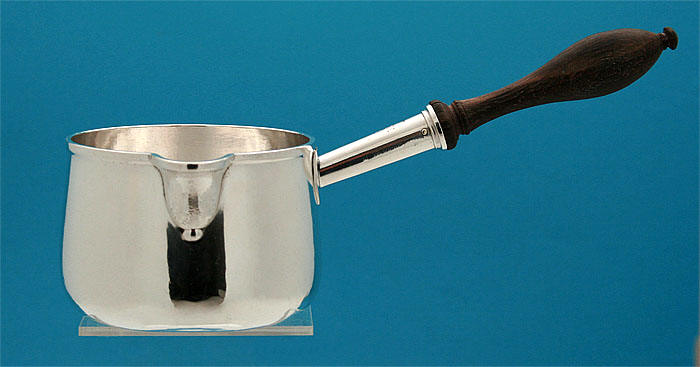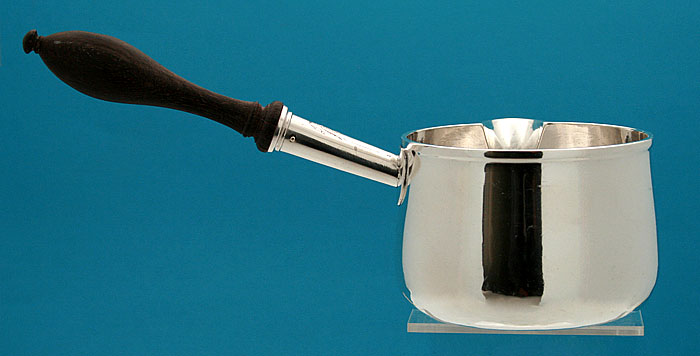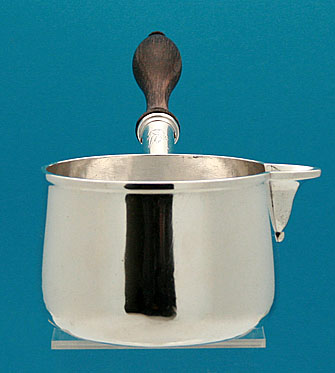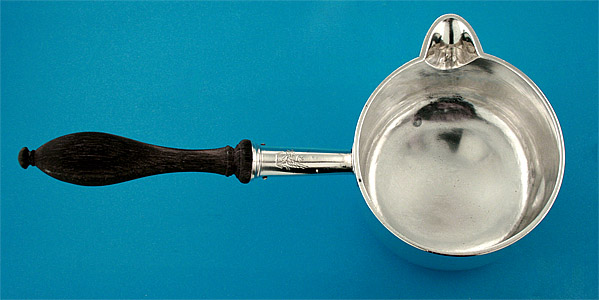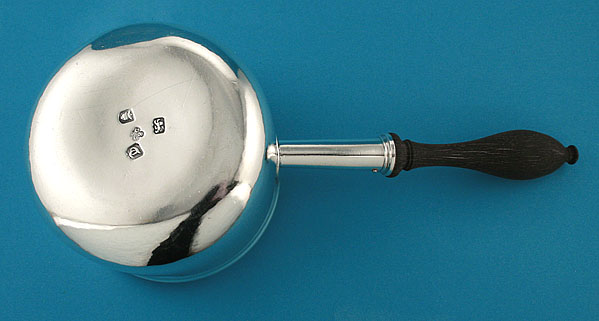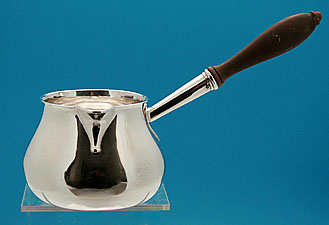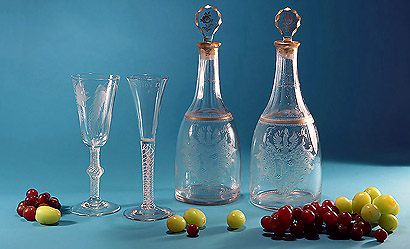Of heavy
gauge silver, usual form with a side spout and folded edge, turned wooden
handle,
and engraved on the ferrule with crest for the
family of Wollaston :
Out of a mural crown or a
demi griffin segreant argent holding
between its claws a mullet pierced
sable
Condition:
Excellent; 2 minor dents to base; slight area of light pitting to silver
beneath spout; very crisp marks
Note on
Smith & Sharp :
"The firm supplied Parker & Wakelin, and Wakelin &
Taylor,
as well as Jeffreys, Jones & Gilbert after the latter's appointment as Royal Goldsmiths in 1784.
One images that
the plate in Carlton House may largely
have come from their hands". Grimwade, p. 655
Brandy saucepans or
warmers were probably used to warm butters and sauces as well we brandy.
They have changed
little in form from the Queen Anne period through the mid-19th century -
their latest appearance. Those in the early 18th
century tend to be smaller,
while the latter 18th century are larger, often
half pint in capacity.
They differ from skillets
in being without legs.
2 1/4"H x 3 1/4"H, 8 1/2" over the handle
7.2 total weight
#5374
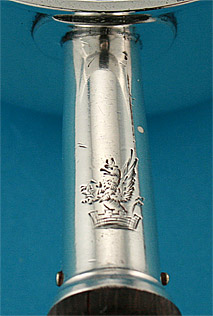 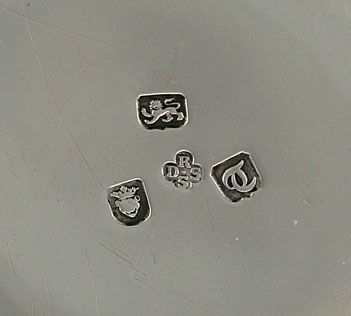
TheFamily of
Wollaston
The family of
Wollaston was anciently settled at Wollaston in the County of
Staffordshire
before and during the reign of Edward III.
They were
later resident at Shenton in the County of Leicestershire.
Two
branches of the Shenton Wollastons were also found at Loseby in the
same county
and at Dereham in the County of Norfolk.
The Loseby
branch of the family was originally named Lawrence.
Sir Edward
Lawrence and was created a Baronet of Great Britain on the 17th
January 1748
with remainder to his great nephew, Isaac Wollaston.
When Sir Edward died in 1749 he was succeeded in the baronetcy
according
to the special remainder by Isaac (died 1750) as the
second baronet.
He in turn was succeeded by his son, Sir Isaac
Lawrence Wollaston as the third baronet.
Sadly, the baronetcy of
Wollaston, of Loseby fell into extinction upon the death of the
third baronet,
Sir Isaac Lawrence Wollaston as a child aged in 1756
some six years after the death of his father.
Henry Wollaston who
served as an Alderman of the City of London obtained in July 1616
an
exemplification of the family arms with a grant of the above crest.
Henry’s nephew, Sir John Wollaston was Lord Mayor of the City of
London
during the year of 1643 during the Civil War.
|
